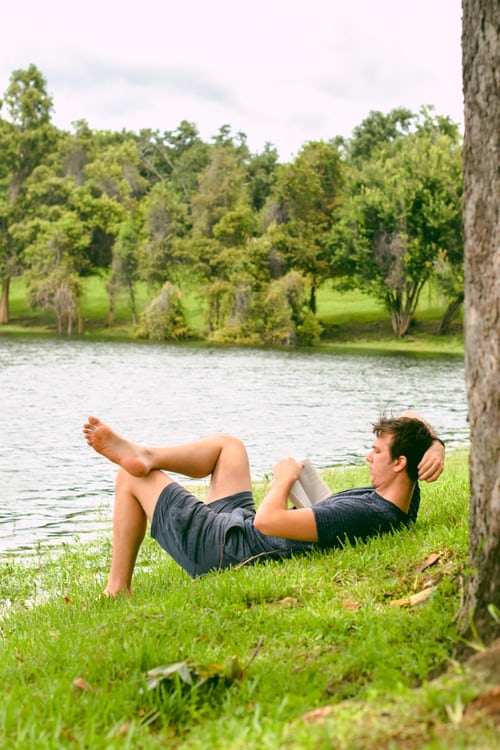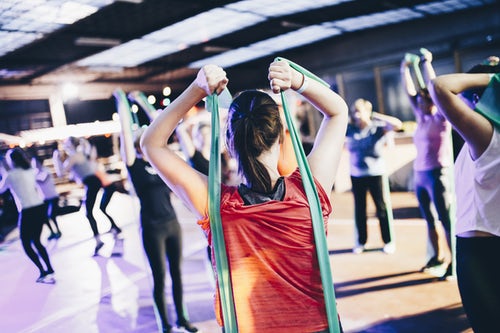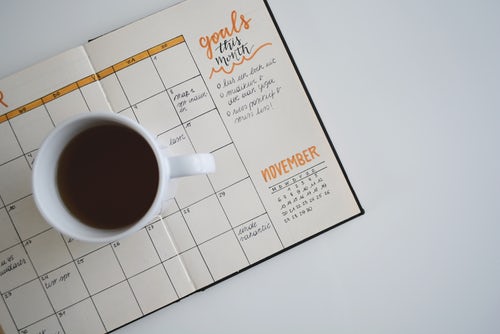Last week Friday, I headed to the gym for a morning workout. I thought I’d switch to a once-a-week morning exercise to see if what they say about morning workouts being better for fat burning were true. I was in high spirits, until I saw all of the cars in the parking lot and had to drive around it a couple of times just to find an open spot.
After scanning my membership code, and being greeted by a young, chirpy employee, I strode around the welcome desk and headed to the locker room. My mouth dropped at the number of people packed into the large facility.
Nearly every treadmill was taken. Every stationary bike had a sweaty, or soon-to-be-sweaty occupant. The free-weight exercise equipment area was packed. People swung weights, stretched, grunted and hopped around on nearly every square inch of the fake turf exercise area.
Where did all of these people come from!? I wondered.
Then it dawned on me—New Year, New Resolutions.
And I wondered how many of these well-intentioned, hopeful people would still be pumping the weights, spinning the stationary bike wheels, or padding the revolving treadmill a month or two from now.
If a recent Forbes article is accurate, only 25% of them will be able to make it past 30 days, and a measly 8% will be able to achieve them.
Those numbers are discouraging.
It could be that a lot of these just chose the wrong goal, latched onto someone else’s goal, or were mimicking what they read somewhere.
Or it could be that they picked the wrong activity, got lured in by the discount price, were told by their doctor that they needed to lose weight, or else; or they wanted to start out the new year feeling good about themselves by doing something.
Exercise is important for overall physical, emotional and psychological health, but just how can you increase your chances of success and steam past those dismal statistics numbers?
Upping your chances of resolution success—
How timely it was that after my morning workout my mom’s AARP healthcare healthy living newsletter Strive arrived in my mailbox. I peeled it open to see what they had to say about sticking with a new fitness program and making it a habit.
They gave four tips, most of which I’d agree with.
-
Set doable goals.
This is a big one and a major factor in stick-to-it failure. People, as the old saying goes, bite off more than they can chew.
If you want to be able to walk 10 miles (consistently) on an outing by the end of the year, work backward to set your daily or weekly walking goals.
If just walking around your half-mile block leaves you huffing and puffing, then you might only be able to trudge down to the corner and back on your first try. Keep doing that until you’re walking at a comfortable pace and not gulping for air.
To avoid injury and stick with it, the rule of thumb is to NOT increase your mileage by more than 10% a week, and NEVER increase your mileage and your moving speed simultaneously. Focus on ONE or the OTHER.
If you’re just aiming for mileage, then the week after making it around your half-mile block three times (or daily, if you’re really pushing yourself), then increase your mileage by 10%, which wouldn’t be very far. But that’s okay. We’re not shooting for the Olympics here, (and all of those Olympians had to go through this type of baby-step training process when they started). We’re aiming for consistent, recreational fitness, to help you enjoy life better and add more life to whatever years you have!
Once you get to a week full of mile walks, then add another tenth of a mile. As you can see, the higher the mileage you’re capable of, the faster the gains as you get closer to the ten-mile goal. It’s like a snowball that gets bigger and gathers steam as it rolls along.
If your goal is to walk a half-marathon by a certain date, use this same formula and work backward. You may be surprised to learn that your goal is too ambitious. Don’t give up; just walk your own half marathon on a day your selected and reward yourself with a trophy, medal or something you’ve wanted to purchase. Or enjoy a nice meal out with your significant other. And then check races/walks in your area to see what the next nearest event is. It might be a fundraiser. That alone could be a great incentive for you.
But the most important part of this advice is that you must know what your goals are!
Too often, when I ask a client what their goals are, they give me the deer-in-the-headlight look. They don’t know.
So, your first step is to think long and hard about what your goals are (try to keep it to one per area—physically, emotionally, spiritually), and then write one down for each. Once you’ve achieved that goal, you can tweak it or add more. Just be reasonable. You don’t want to sabotage yourself from the starting block. It would be like lacing on clunky hiking shoes to run a marathon!
And if you find that you’ve taken on too much, or too little, feel free to adjust. It’s okay. You’re allowed to play around with this goal stuff. As long as you don’t play around with it so much that you doom yourself to accomplishing nothing, like a procrastinator does.
-
Just have fun.
I know what their point is, and, for the most part, I agree with it. But as a former athlete, I can tell you that some of my days just weren’t fun. Far from it. They were painful, annoying, scary. Most of the time I was having fun, but not always. But I still had to drag myself to the gym to practice.
And you know what? Most of the time I was really happy I did. I felt proud of myself and much better after the practice. I felt as though I’d climbed an obstacle and achieved something.
And that brings me to the next part of having fun: the better I got, the more fun it was!
When you’re just starting out a new activity, it can feel laborious and not worth the effort. The brain actually rebels with the new moves. But after a while, when new neurons are formed, your body responds better, it builds up a motor memory, and you can do things faster and better.
So whether you’re taking up salsa dancing, violin playing, (like a former co-worker of my husband who took up the violin after retirement and a horrendous round of chemo for cancer), swimming or hiking, remind yourself that it will get easier—if you stick with it.
-
Track your progress.
Not only is it motivating to keep a record of your improvement, it’s also essential to sticking with and meeting your goals!
That can’t be stated enough. Research shows that those people who don’t write down their goals and share them with someone else are unlikely to succeed.
So get yourself a notebook and track your progress. Post a chart on your refrigerator or laundry room wall. I have a chalkboard calendar mounted on the utility room door in our laundry room that I mark my weight loss (or gain!) on every other day after I weigh myself. It keeps me honest and tuned into my goals.
It’s when I ignored my weight for an entire year that I packed on an extra 15 – 20 pounds my frame (and knees) couldn’t afford for me to pack on. It’s agony trying to get them off, but my new reduced-acid diet, workout program, and every-other-day weigh-in keep me motivated.
I also like to use a notebook at the gym to record my progress. When I notice that I’ve plateaued in my workout, I can change it up and re-start the body’s adaptation system.
-
Reward yourself.
When you reach a milestone, treat yourself, as I mentioned above.
It may be that you can enjoy a rummage-through-your closet day to try on pants and skirts or other items to see if you can reduce a size. If so, toss those too-big clothes and buy yourself a couple of items to replace them. Don’t go too wild if you’re planning to lose more weight. Save the big treat for when you’ve reached your final goal.
If you’re still working, treat yourself to a vacation day.
It’s okay to pat yourself on the back for doing a good job. And if you’ve enlisted someone else as a cheerleader, include them in the celebration with a thank you gift.
And I’ll add another goal to the list.
-
Even if you hit a snag, don’t give up.
Know that there will be obstacles and setbacks. Life is like that. Don’t be surprised by them.
If you’ve found that you’ve already dropped the ball on your goals the third week of January, don’t be discouraged or give up. If you’ve determined that you picked the wrong activity, try another one. If you’ve overdone it and burned yourself out already, re-set and try again.
And don’t let anyone else sabotage you. Unfortunately, a lot of people don’t like it when they see someone else succeeding at what they know they should be and could be doing.
Your consistency and passion (not your berating and belittling) may be just what they need to join you and set their own positive goals!
Until next week,
Get out there and enjoy the fruit of hitting your goal!
Blessings,
Andrea
Andrea Arthur Owan, M.S., A.T., R., is an award-winning inspirational writer, fitness pro, and chaplain. She writes and works to help people live their best lives — physically, emotionally, and spiritually.




